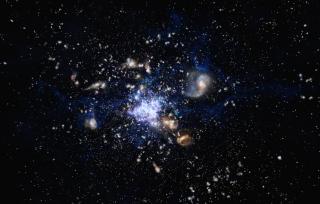Bibcode
Bakx, Tom J. L. C.; Dannerbauer, Helmut
Referencia bibliográfica
Monthly Notices of the Royal Astronomical Society
Fecha de publicación:
9
2022
Número de citas
10
Número de citas referidas
9
Descripción
We present methods to (i) graphically identify robust redshifts using emission lines in the (sub)mm regime, (ii) evaluate the capabilities of different (sub)mm practices for measuring spectroscopic redshifts, and (iii) optimize future (sub)mm observations towards increasing the fraction of robust redshifts. Using this publicly available code (https://github.com/tjlcbakx/redshift-search-graphs), we discuss scenarios where robust redshifts can be identified using both single- and multiple-line detections, as well as scenarios where the redshift remains ambiguous, even after the detection of multiple lines. Using the redshift distribution of (sub)mm samples, we quantify the efficiencies of various practices for measuring spectroscopic redshifts, including interferometers, as well as existing and future instruments specifically designed for redshift searches. Finally, we provide a method to optimize the observation strategy for future (sub)mm spectroscopic redshift searches with the Atacama Large Millimetre/submillimetre Array, where 2 mm proves indispensable for robust redshifts in the $\mathit{ z}$ = 2-4 region.
Proyectos relacionados

Gas Molecular y Polvo en Galacias através del Tiempo Cósmico
Dos cuestiones fundamentales en la Astrofísica son la conversión de gas molecuar en estrellas y cómo este proceso físico depende del entorno en todas las escalas, desde sistemas planetarios, cúmulos estelares, galaxias hasta cúmulos de galaxias. El objectivo principal de este proyecto es el de estudiar la formación y evolución de galaxias a partir
Helmut
Dannerbauer